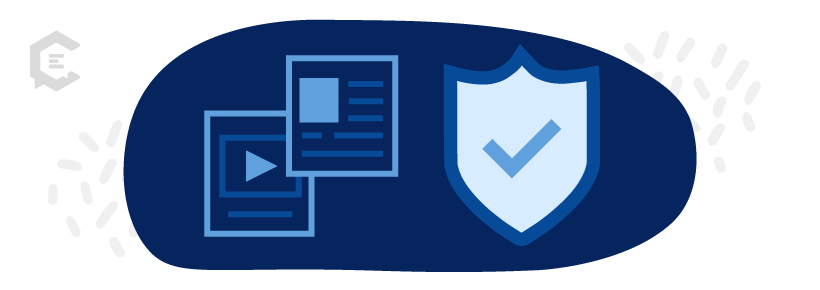The battle against cyber threats has become one of the most critical challenges organizations of all sizes face. As cybercriminals continue to evolve and adapt their tactics, businesses are turning to threat intelligence and incident response services to safeguard their digital assets.
Content marketing emerges as a powerful ally in this cybersecurity landscape, educating, empowering, and guiding organizations to effectively combat digital risks. This article delves into the role of content marketing in the realm of threat intelligence and incident response, exploring how it bridges knowledge gaps, addresses pain points, and crafts engaging narratives for a safer digital environment.
Evolution of Cyber Threats
Cyber threats have evolved from mere nuisances to sophisticated, targeted attacks capable of crippling organizations. The proliferation of connected devices, cloud technologies, and complex networks has provided cybercriminals with a broader attack surface, necessitating a proactive and adaptive approach to cybersecurity. Effectively communicating this information to your target clientele can help establish your business as a trusted and reliable player in the marketplace.
The Changing Landscape of Digital Risks
The digital landscape is rife with risks, from ransomware attacks and data breaches to advanced persistent threats. Organizations must remain vigilant and well-prepared to detect, respond to, and mitigate these risks to protect their sensitive data and maintain operational integrity. Keeping your customer base informed of these changes is one way to drive engagement with content marketing.
Real-world Incidents and Their Impacts
High-profile incidents, such as the Equifax breach and the SolarWinds supply chain attack, serve as stark reminders of the potential consequences of cyber threats. These incidents have far-reaching impacts on businesses, underscoring the urgency of robust threat intelligence and incident response strategies.
Decoding Threat Intelligence and Incident Response
Threat intelligence and incident response are partners fighting side-by-side against hackers. When they combine forces, they can be effective at mitigating and avoiding attacks. Your content marketing strategy can make these concepts easy for your audience to understand. Once they grasp how threat intel and incident response safeguard their networks, they can appreciate their value and make a purchasing decision.
How They Work Together
Threat intelligence involves gathering, analyzing, and sharing information about cyber threats to anticipate, prevent, and respond to potential attacks. On the other hand, incident response is the systematic approach to managing and mitigating the aftermath of a cybersecurity breach.
Benefits to Businesses
By effectively combining threat intelligence and incident response, organizations can enhance their cybersecurity posture, minimize damage, and accelerate recovery in the event of a breach. Timely and informed actions can mitigate financial losses, reputational damage, and legal repercussions.
The Role of Content Marketing in Cybersecurity
Content marketing acts as a bridge between the complex world of cybersecurity and businesses seeking to protect themselves. Informative articles, blog posts, and explainer videos break down intricate concepts, ensuring that decision-makers and IT professionals grasp the significance of threat intelligence and incident response on an ongoing basis.
By understanding and empathizing with the audience’s challenges, concerns, and needs, content creators can craft messages that capture attention and provide valuable solutions. This approach not only enhances user experience and engagement but also builds trust and loyalty over time.
With the following content marketing recommendations, threat intelligence providers can develop a solid content strategy primed to boost engagement and awareness.
Making Tech Jargon Accessible
Cybersecurity is notorious for its technical jargon. Content marketing translates these terms into layman’s terms, enabling a wider audience to understand the risks and solutions without feeling overwhelmed.
Highlighting Real-world Applications
Real-life success stories provide tangible evidence of the value that threat intelligence and incident response bring to businesses. Case studies and testimonials from satisfied clients resonate with potential customers, building trust and credibility.
Whitepapers and Deep-Dive Analyses
Whitepapers and in-depth analyses delve into specific cyber threats, attack vectors, and mitigation strategies. These comprehensive resources offer actionable insights that organizations can implement to bolster their defenses.
Storytelling in the Cyber World
Storytelling humanizes the cybersecurity narrative, transforming abstract concepts into relatable scenarios. Narratives of cyber battles, resilience, and triumph captivate audiences, driving home the importance of threat intelligence and incident response.
Personalizing Cyber Threat Narratives
Personalization tailors content to different industry verticals and organizational roles. CFOs, IT managers, and CEOs each have distinct concerns and priorities when it comes to cybersecurity. Addressing these specifics fosters engagement and relevance.
Using Visuals and Infographics
Visual content, such as infographics and animated videos, simplifies complex ideas and aids in retention. Eye-catching visuals convey information quickly and effectively, making cybersecurity concepts more accessible.
Collaborative Content: Partnering with Experts
Collaborative content features insights from cybersecurity experts, allowing audiences to tap into specialized knowledge. Interviews, roundtable discussions, and guest blog posts showcase diverse perspectives and cutting-edge practices.
Webinars and Live Q&A Sessions
Webinars and live sessions provide an interactive platform for experts to share their insights and engage with the audience directly. Attendees can ask questions and receive real-time guidance on cybersecurity concerns.
Measuring Success and Continual Refinement
Measuring the impact of your content and refining your strategies based on data-driven insights is the cornerstone of effective content creation.
Key Performance Indicators for Cybersecurity Content
Measuring the success of cybersecurity content involves tracking metrics such as website traffic, engagement rates, social shares, and lead conversions. These key performance indicators (KPIs) indicate the effectiveness of content in raising awareness and driving action.
Gathering Feedback and Iterative Improvement
Feedback from the audience is invaluable for refining content strategies. Surveys, comments, and direct interactions help content creators understand the needs and preferences of their target audience.
Using Analytics and Metrics
Utilizing analytics tools provides data-driven insights into content performance. Analyzing user behavior, click-through rates, and conversion rates informs content optimization and strategy adjustments.
Adapting to Industry Changes and Innovations
The cybersecurity landscape evolves rapidly, with new threats and technologies emerging regularly. Content marketing must remain adaptable, staying up-to-date with industry changes and trends to provide relevant and timely information.
The Road Ahead for Cybersecurity Content Marketers
As the battle against cyber threats continues, content marketing becomes a beacon of education and empowerment. By bridging knowledge gaps, addressing pain points, and crafting engaging narratives, content marketers play a pivotal role in fortifying organizations against digital risks.
Through collaborative efforts, data-driven insights, and a commitment to staying ahead of industry changes, cybersecurity content marketers pave the way for a safer and more secure digital future.
To get top-notch content for your cybersecurity company, you can rely on ClearVoice’s network of tech writers. Learn more by reaching out to ClearVoice today.







